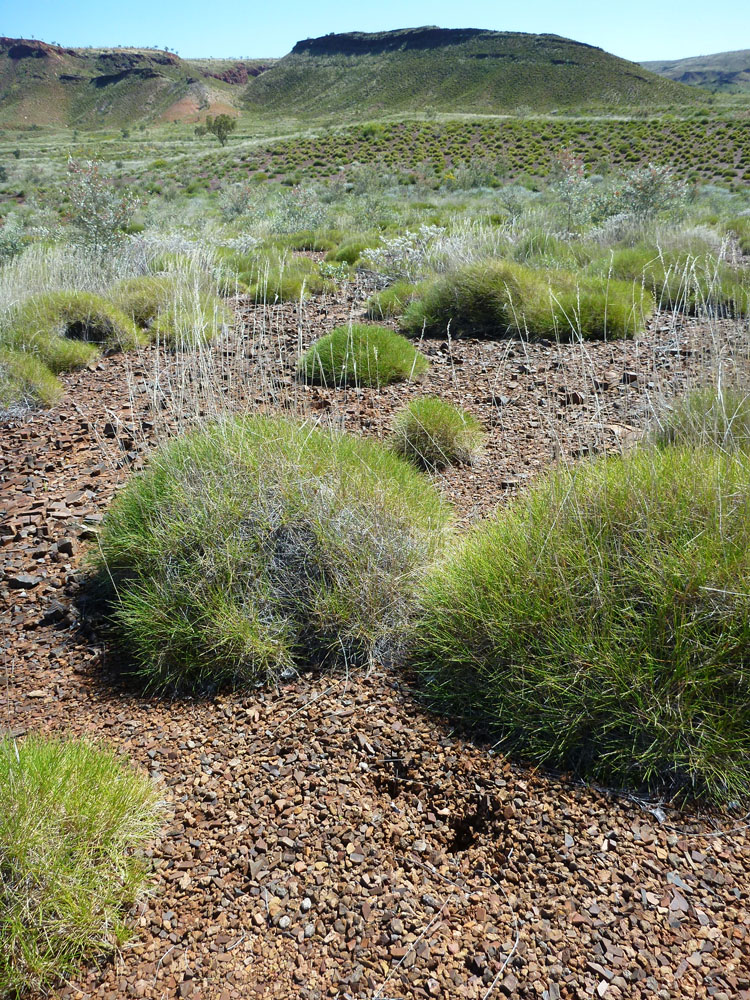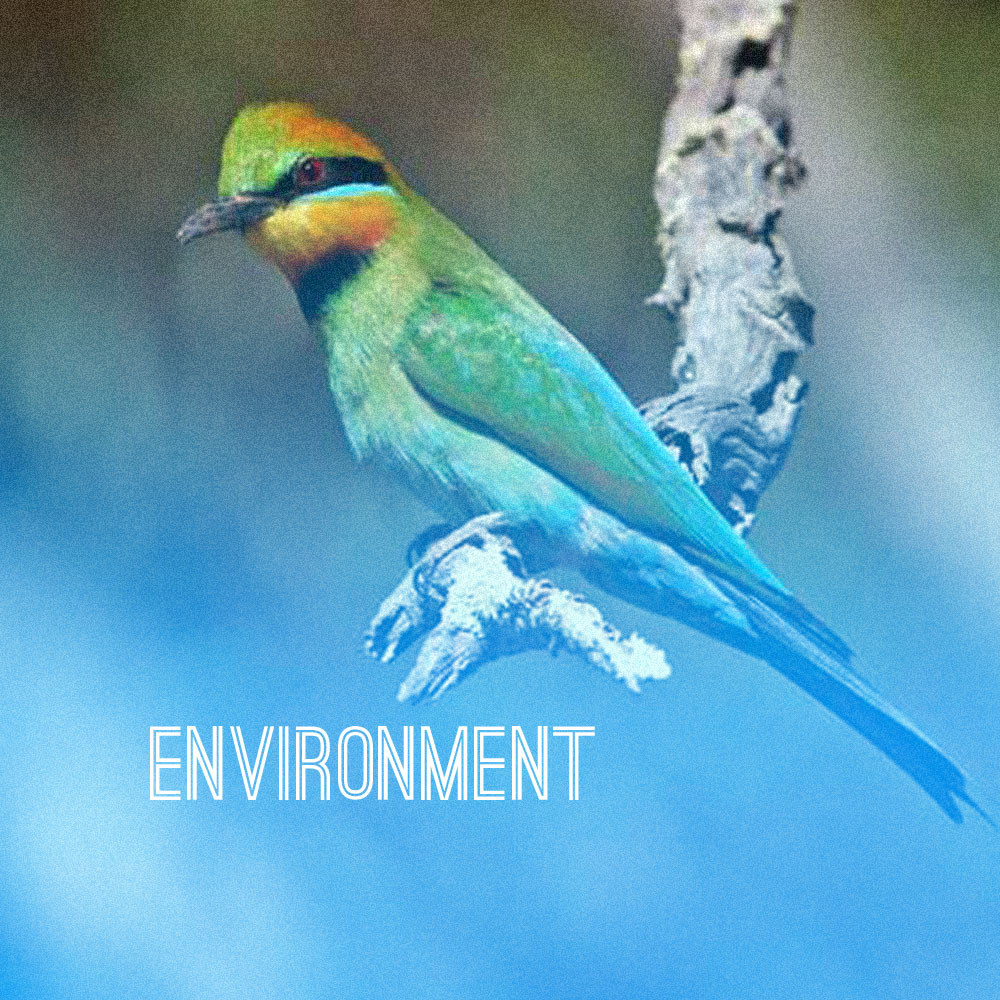During the Nyimili Project a short, preliminary environmental survey was undertaken to identify species that may be present in the range and to determine threats such as introduced flora and fauna.
A total of 58 different animal species were recorded during the survey. including 38 birds, 14 mammals and six reptiles.
Three significant species have been identified within the range to date; they are the Pilbara Orange Leaf-nosed Bat, the Rainbow Bee-Eater and the Western Pebble-mound Mouse.
In addition to the significant species confirmed during the preliminary environmental survey, database searches indicate another 22 species of flora and fauna that are ‘endangered, threatened, specially protected or priority species’ that potentially occur in the area. Future, more targeted, environmental work will hopefully identify species such as Northern Quoll, Mulgaraand the Pilbara Olive Python. If you look closely at the ochre paintings in the Survival in the Arid Zone tour you might be able to spot the illusive quoll painted on the wall!
Five introduced species which could have a negative impact on the ecosystem of the range were also identified. These invaders include domestic cattle, Mesquite, Stinking Passion Flower, Ruby Dock and Buffel Grass. To mitigate the impact of these threats the Yinhawangka People propose to establish a ranger program which would allow their young people to go out on country, manage these threats, and care for the Nyimili Range.
Pilbara Orange Leaf-nosed Bat
Very little is known about the Pilbara Orange Leaf-nosed Bat (Rhinonicteris aurantia). It is thought the Pilbara Orange Leaf-nosed Bat lives in colonies that range in size from just 20 individuals to as many as a few thousand bats. To survive they need warm and humid caves to roost during the day. It is believed that they forage in close proximity to their roost sites for their favourite meal of insects. Because they are very limited in the places that they can roost, they are under particular threat from any human disturbance that drives them from their roosting sites.
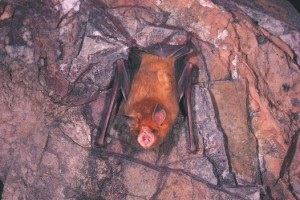
The Pilbara Orange Leaf-nosed bat was recorded at five different places around the range which is very exciting as it suggests that there might be multiple roosting sites at Nyimili.
The Pilbara Orange Leaf-nosed Bat is a very significant threatened species that is listed as ‘Vulnerable’ under the Federal ‘Environment Protection and Biodiversity Conservation (EPBC) Act’, and ‘Rare or likely to become extinct (Vulnerable)’ under Schedule 3 of the WA Wildlife Conservation Act (Specially Protected Fauna) Notice 2015 (WA WC Act).
There is currently only one known population occurring on conservation estate. Many of the known populations exist in the mineral-bearing locations that are the focus of mining activity, it is likely that most of the currently known roosts are potentially under some form of threat, with an expected >30% decline in the population size of the Pilbara Orange Leaf-nosed Bat over the next 15 years if mining proceeds without significant constraint.
Rainbow Bee-eater
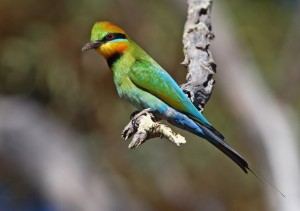
The Rainbow Bee-eater (Merops ornatus) is a striking, colourful bird that is most often found in open forests, woodlands and shrublands, usually near water. Rainbow bee-eaters are migratory and migrate north during the winter into northern Australia, New Guinea, and some of the southern islands of Indonesia. Rainbow Bee-eaters as the name suggests prefer a diet of flying insects, primarily bees and wasps, which they catch on the wing and take back to a perch. The Rainbow Bee-eater beats and scrapes its prey against the perch to remove the poison sting before swallowing them!
Rainbow Bee-eaters nest in sandy banks, where they dig a long tunnel (80 cm long on average). The tunnel leads to a nesting chamber lined with grasses where parents can incubate their eggs and later feed and take care of their young, safe from predators.
The Rainbow Bee-eater was also recorded at a number of sites around the range. This species is protected under International Agreement as a migratory terrestrial species, and is therefore protected under both the Federal EPBC Act and WA WC Act.
Western Pebble-mound Mouse
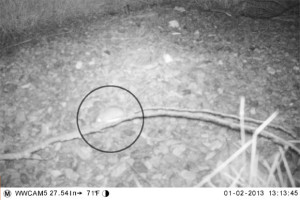
The Western Pebble-mound Mouse (Pseudomys chapmani) derives its name from the way in which they construct their burrows. The mice collect thousands of similarly sized pebbles which they carry in their mouth to the burrow location. They then use their forelimbs to place the pebbles where they want them. Mounds can cover areas as large as 10 m2 and can contain up to 50 kg of pebbles! The burrows protect the mice from predators, and it is thought the arrangement of pebbles may assist in cooling the burrows. The mounds last for a very long time with some burrows being used and modified by successive generations of mice. Western Pebble-mound mice are extremely social creatures with up to 14 individual living in a single mound. You can identify an active mound by the small craters which mark the entry and exit points to the mound.
A number of active and inactive Western Pebble-mound Mouse mounds were observed throughout the foothills of the range. This species is a ‘Priority 4’ under the WA WC Act. During the environmental survey motion capture images were captured of a mouse on an active Pebble-mound, you can see in the picture to the right.
